Biceps Femoris: 5 Exercises and 3 Stretches
One often-overlooked muscle group is that of the biceps femoris - the largest muscle group in the hamstrings and a vital component of any sort of lower body locomotion.
Whether you are an advanced lifter wishing to isolate this muscle to a greater degree, or an individual with poor hamstring mobility because of a sedentary lifestyle, properly exercising and stretching the biceps femoris is an excellent way of improving the state of your leg muscles.
Most - if not all - exercises and stretches meant to target the biceps femoris will target the hamstring muscles in their entirety, and will often involve the biomechanics of knee flexion and pelvis movement.
What is the Biceps Femoris?
In more technical terms, the biceps femoris is a two-headed (hence “biceps”) skeletal muscle, with one superficial head and the other being far deeper in the leg. The origin point is in the femur, while the distal attachment point lies in the fibula of the calves.
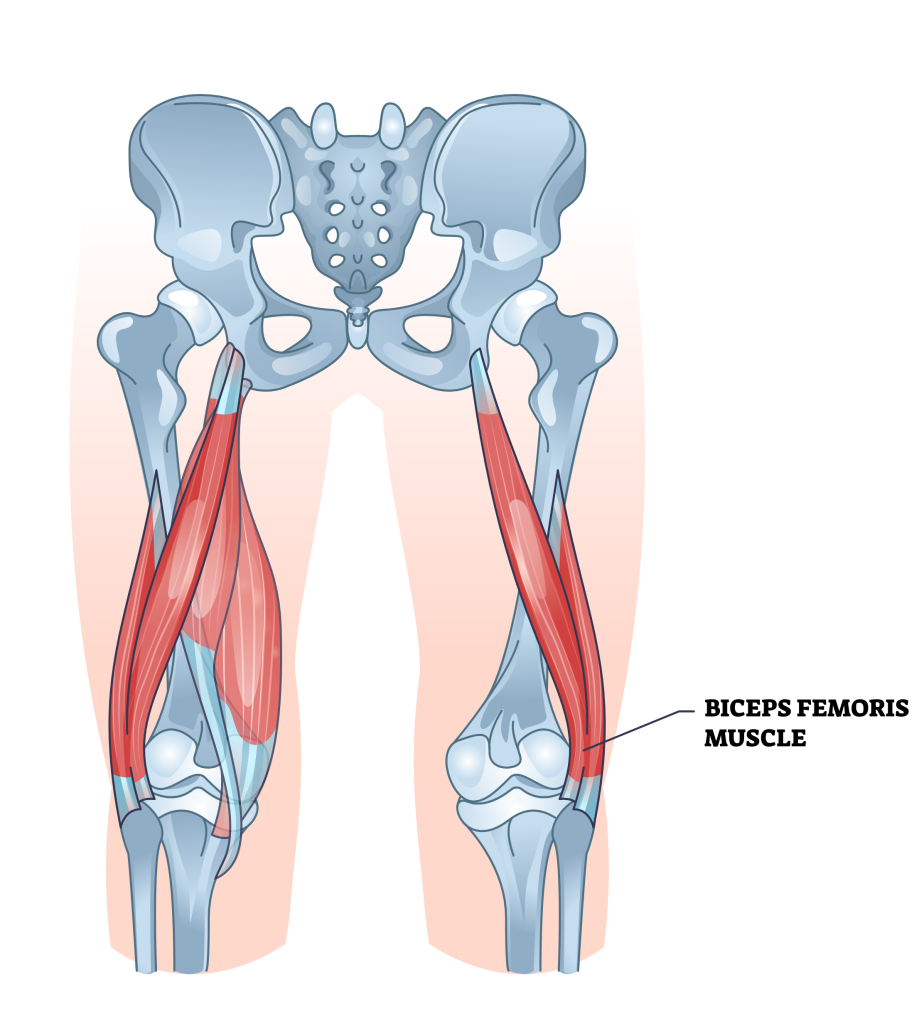
The biceps femoris is located alongside the semitendinosus and semimembranosus muscles at the posterior-lateral side of the femur (hence “femoris”), and will often be contracted in tandem with the nearby gluteal muscles so as to create knee flexion or pelvis retraction and extension.
The biceps femoris will also aid in stabilization when other muscle groups are contracted, especially in multi-joint compound movements like walking or swimming, where the muscle is not necessarily recruited in a dynamic capacity but is nonetheless still utilized.
Benefits of Training and Stretching the Biceps Femoris
Achieving strong and mobile biceps femoris muscles will aid in force output from the lower body, improving movements like jumping, squatting and sprinting; Directly training this muscle can help counter the effects of a sedentary lifestyle, or aging.
Furthermore, ensuring that the tissues of the biceps femoris are flexible and dense will greatly reduce the risk of injury therein - of which is a common issue for athletes of certain sports, like soccer and football.
What Workout Includes the Biceps Femoris?
As the biceps femoris are a part of the hamstrings, they are most often trained during a “leg day”, or in workout sessions involving exercises like high jumps, deadlifts, squats and stair climbing.
Best Biceps Femoris Exercises
For strengthening the biceps femoris, there are few ways as effective as directly targeted resistance training.
The following exercises will either isolate the hamstring muscles themselves, or include them in their muscular recruitment pattern - meaning that the biceps femoris will be exercised as well.
1. Machine Hamstring Curls
Hamstring curls are a machine-based isolation movement best performed with low resistance if the lifter is new to exercise, or otherwise possesses weakened biceps femoris muscles.
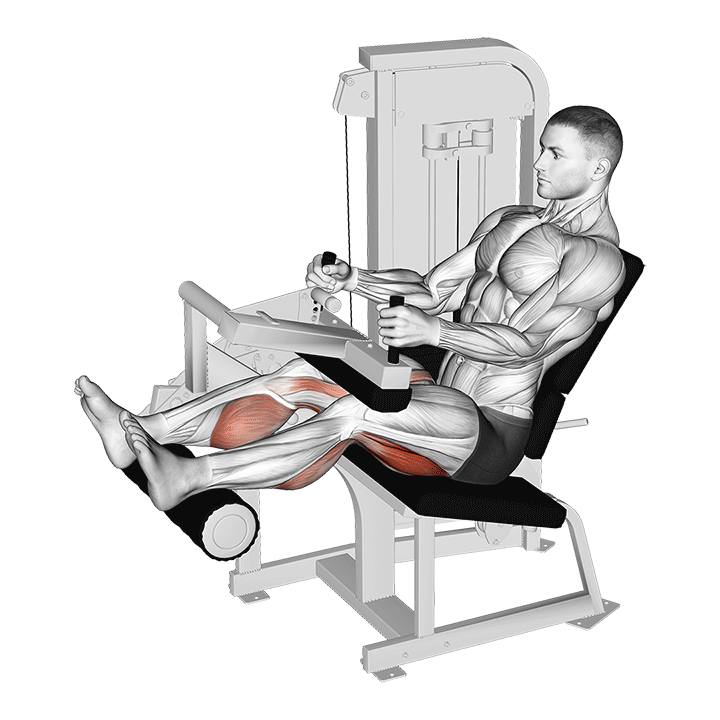
Benefits of Machine Hamstring Curls
Hamstring curls benefit from being performed with resistance machines, meaning that they can provide a constant time under tension and are highly convenient in terms of versatility.
Furthermore, the fact that hamstring curls isolate the hamstrings through their full range of motion means that the biceps femoris may be focused on with great efficiency.
Muscles Worked by the Machine Hamstring Curl
Hamstring curls will train the muscles of the hamstrings - including the biceps femoris - as well as utilize the glutes and calves as secondary mover muscles, if not stabilizing muscles as well.
Equipment Needed to Machine Hamstring Curl
The machine hamstring curl will require a leg curl machine, though there are free weight variations that offer somewhat different benefits.
2. Stiff-Legged Deadlifts
Stiff-leg deadlifts are a variation of the conventional deadlift with a greater focus on the posterior chain, as they are performed with less knee flexion and therefore will require greater contraction of muscles like the glutes and hamstrings.
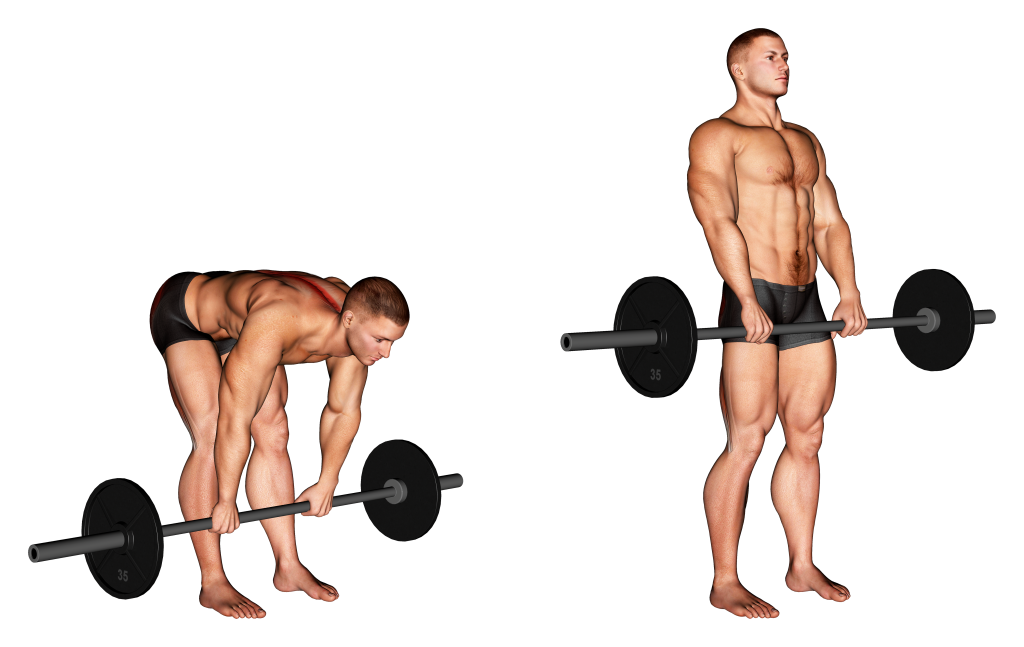
Despite the fact that they are a compound exercise, the biceps femoris are nonetheless exercised quite intensely due to the pure difficulty of the movement - making it excellent for training the hamstrings, including the biceps femoris.
Benefits of Stiff-Legged Deadlifts
Apart from the fact that stiff-legged deadlifts are extremely effective at building biceps femoris strength and size, they are also known for building full-body power and reinforcing non-muscular tissue throughout the lower body.
This can help reduce the risk of future biceps femoris injury, as well as ensure that they are utilized to their fullest capacity during athletic activities.
Muscles Worked by Stiff-legged Deadlifts
Stiff-legged deadlifts work the glutes, hamstrings, quadriceps, back and practically every other muscle group of the body to a certain extent. Because of this - if the lifter is unfamiliar with resistance training, it may be better to pick another biceps femoris exercise until they have gained more training experience.
Equipment Needed to Stiff-legged Deadlift
Stiff-legged deadlifts are performed with a barbell and set of weight plates, though certain variations may instead use dumbbells or kettlebells.
3. Lunges
Whether it be bodyweight, kettlebell or resistance band lunges, the biceps femoris is exercised quite well by lunging movements of all types.
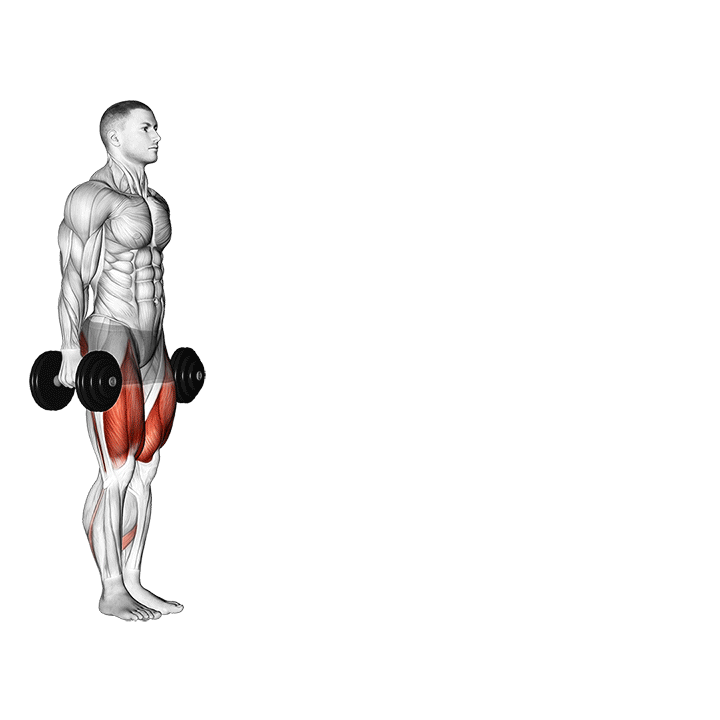
All lunge exercises are compound movements that target the entirety of the legs, and will usually feature knee flexion alongside hip rotation.
Benefits of Lunges
Lunges are highly convenient and allow an exerciser to train their biceps femoris with all sorts of equipment - or none at all.
Furthermore, they are quite effective at improving the stability and flexibility of the hamstrings as a whole, making lunges not only convenient but also useful for exercisers or all experience levels.
Muscles Worked by Lunges
Lunges work the hip flexors alongside the quadriceps, glutes and hamstrings - creating a full lower body training stimulus with relatively little joint impact.
Equipment Needed to Lunge
The sort of equipment needed to perform the lunge will be based on what sort of lunge is chosen. It is entirely possible to perform lunges with no weight whatsoever, just as dumbbells or barbells may be used as well.
4. Machine Hack Squats
The machine hack squat is a multi-joint compound exercise best known for their usage in bodybuilding and athletic training programs.
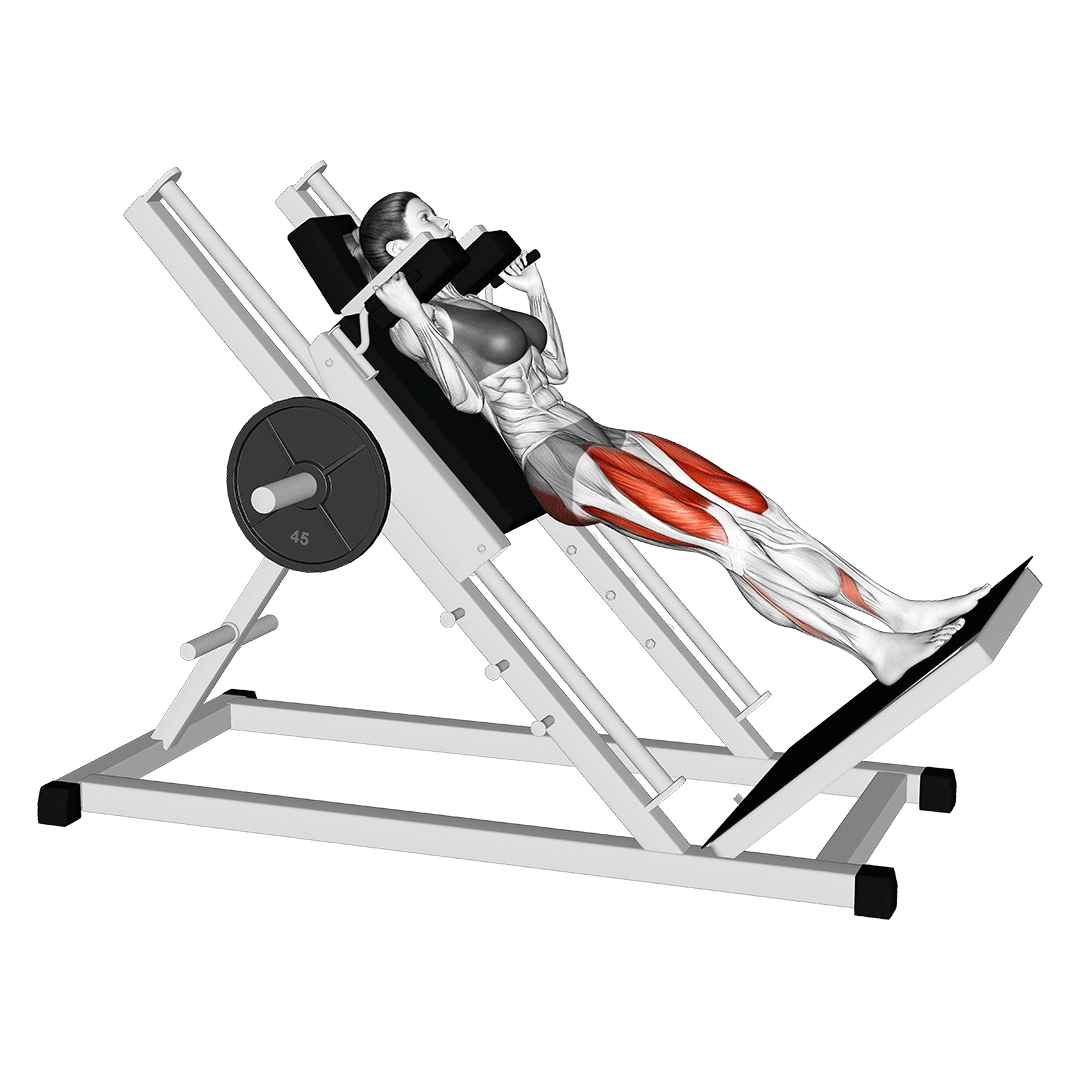
As a compound movement, the machine hack squat works the entirety of the posterior chain to great effect, and will often be performed for moderate volume at a moderate amount of weight.
Due to its adjustable nature and all the safety benefits of resistance machines, the machine hack squat is especially useful for novices and returning athletes who have yet to fully condition their body to the rigors of exercise.
Benefits of Machine Hack Squats
Apart from offering a lengthy time under tension with which to train the biceps femoris, the machine hack squat will also recruit the hamstrings through a full range of motion - providing complete and highly effective coverage of not only the biceps femoris, but also all nearby muscles as well.
Furthermore, the relatively low impact of the machine hack squat creates some leeway for the lifter to familiarize themselves with the exercise, furthering the idea that it is one of the most appropriate biceps femoris exercises for novices.
Muscles Worked by Machine Hack Squats
The machine hack squat recruits the entirety of the lower body - much like a conventional squat, only with a greater emphasis on the posterior chain, rather than the anterior side of the body.
This means that the muscles of the quadriceps, glutes, hamstrings and calves are all worked to a dynamic capacity - as will be those of the lower back and core, though as stabilizer muscles instead.
Equipment Needed to Machine Hack Squat
The hack squat machine exercise will clearly require a hack squat machine, though additional weight plates may also be needed if the machine does not produce its own resistance.
Best Biceps Femoris Stretches
Apart from exercises the biceps femoris so as to develop and maintain it, ensuring that the muscle and its associated tendons are flexible enough to remain stable under stress is also vitally important.
Properly stretching the biceps femoris can reduce any future risk of injury, allow the hamstrings to function better as a large muscle group and even improve the movement of seemingly unrelated areas, such as the lower back and core.
1. Supine Hamstring Stretches
The supine hamstring stretch is a static position in which the entirety of the hamstring muscles are placed in a state of elongation, improving mobility and structural integrity for both tendons and skeletal muscle.
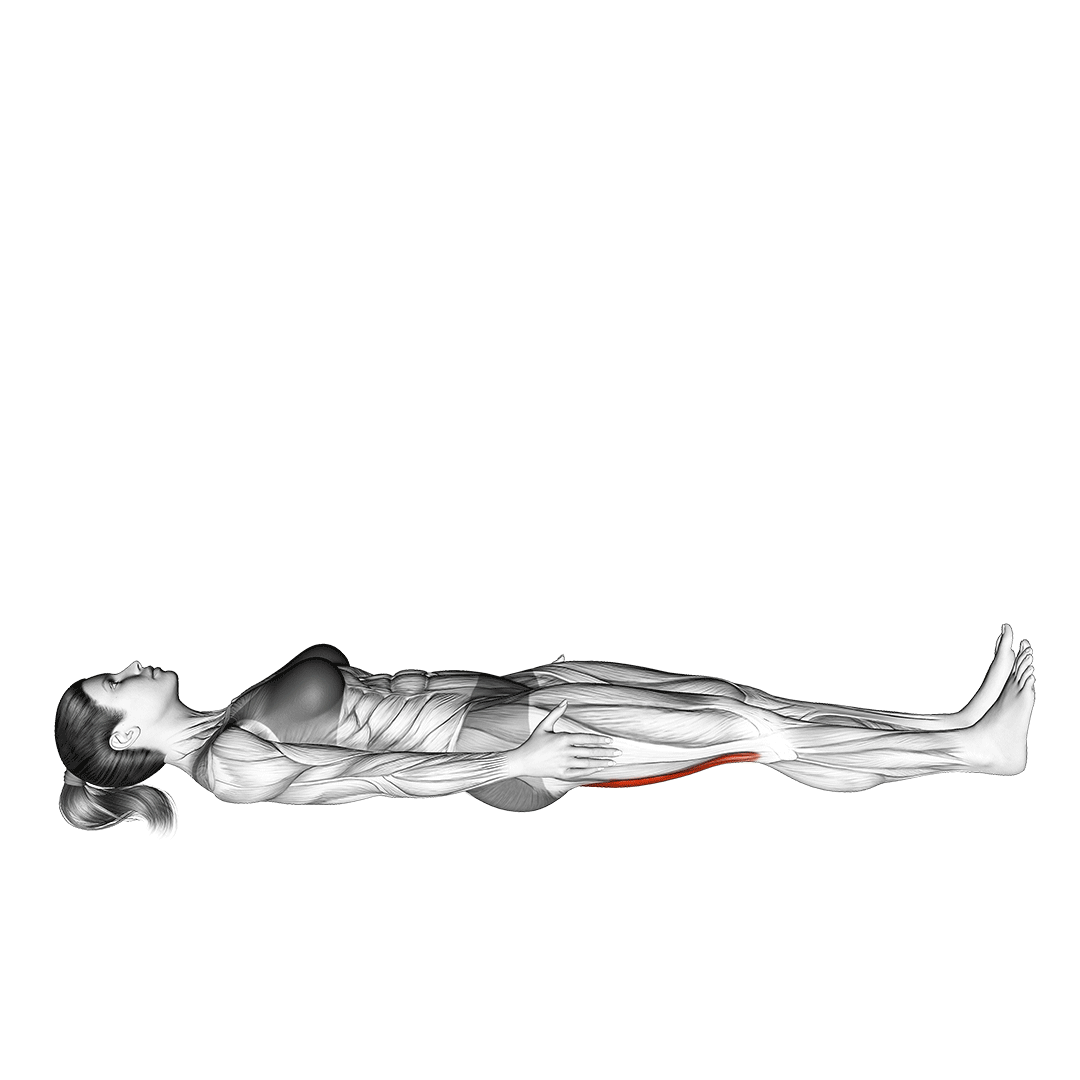
Benefits of Supine Hamstring Stretches
Supine hamstring stretches will stretch the entirety of the hamstring muscle group, including the biceps femoris.
Furthermore, the fact that they require no equipment and are performed from a lying position means that they are appropriate for home use and for individuals unfamiliar with mobility work.
Equipment Needed to Supine Hamstring Stretch
No equipment is needed to perform the supine hamstring stretch.
How-to:
To perform the supine hamstring stretch, the exerciser will lie on their back with one side of the hips and knees bent upwards, the other flat on the ground.
Placing one hand on the outer side of the outstretched leg, the exerciser will then gently push it across their body, holding the position when a stretch is felt along the buttocks and rear of the outstretched leg.
After holding this position for a count, they will repeat it with the other side.
2. Seated Hamstring Stretch
The seated hamstring stretch is another static stretch that targets the biceps femoris alongside the semitendinosus and semimembranosus muscles, creating a full hamstring stretch while the muscle is in a state of extension.
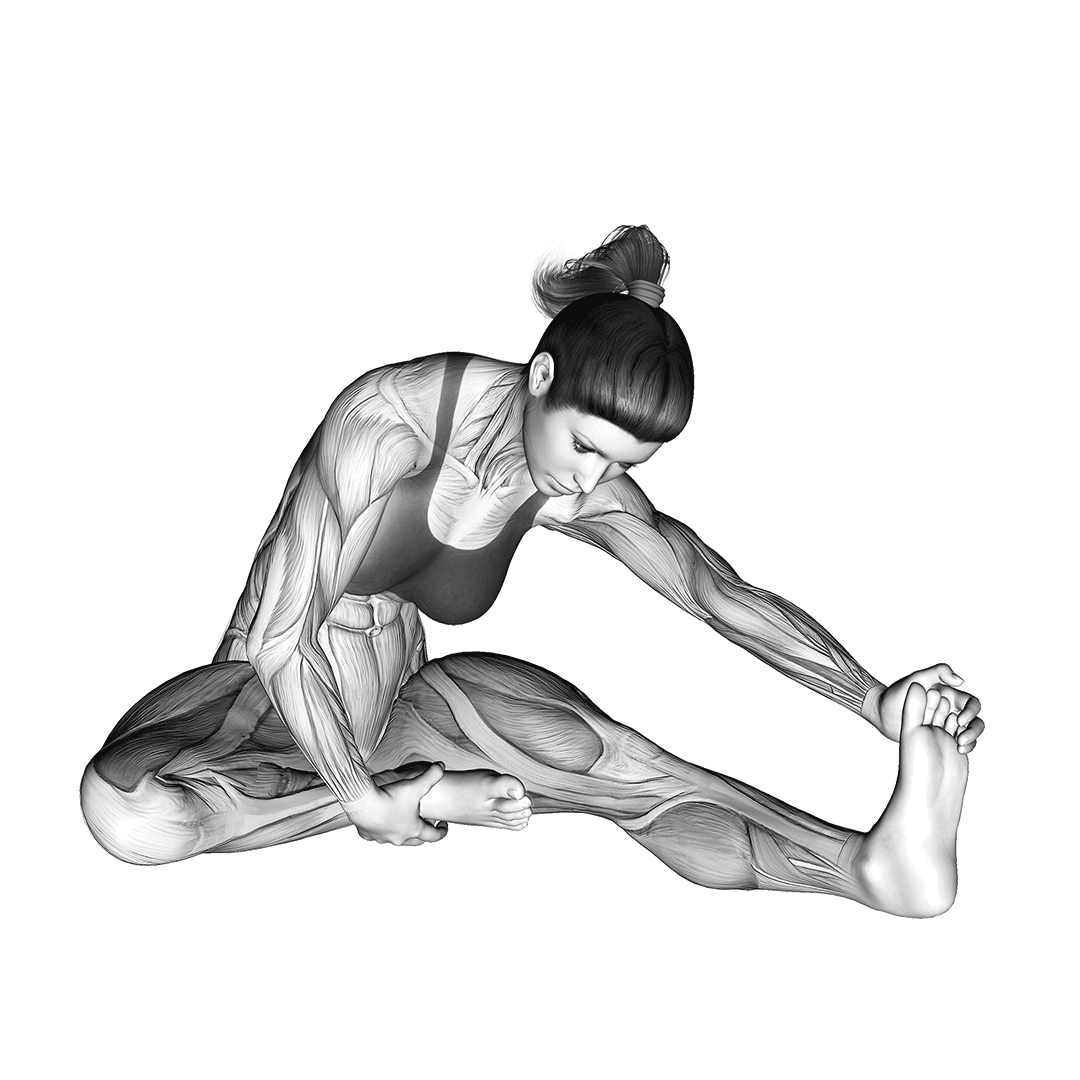
Benefits of Seated Hamstring Stretches
The seated hamstring stretch - much like the supine stretch - is quite convenient and easy to perform, allowing it to be done even at home without the need for any sort of special equipment.
Additionally, the seated hamstring stretch will also stretch the muscles of the calves and the tendons of the ankles as well, providing a dual-purpose movement that is especially useful for runners.
Equipment Needed to Seated Hamstring Stretches
The seated hamstring stretch requires no equipment, though an easier variation may be performed with the use of a stool or chair.
How-to:
To perform the seated hamstring stretch, the exerciser will sit on the ground with their feet extended before them.
Bending one leg at the knee for stability, they will then extend the torso forward until they feel a stretch on the posterior side of the un-bent leg. From this position, they will extend their arms and grip the foot of the un-bent leg, pulling it towards themselves so as to intensify the stretching effect.
Holding this position for several seconds, they will then repeat the motion with the opposite leg.
3. Standing Forward Bend Yoga Pose
The standing forward bend yoga pose is an advanced yoga pose that stretches the biceps femoris alongside the entirety of the posterior chain to great effect - though it will also require some level of mobility already having been established by the exerciser.
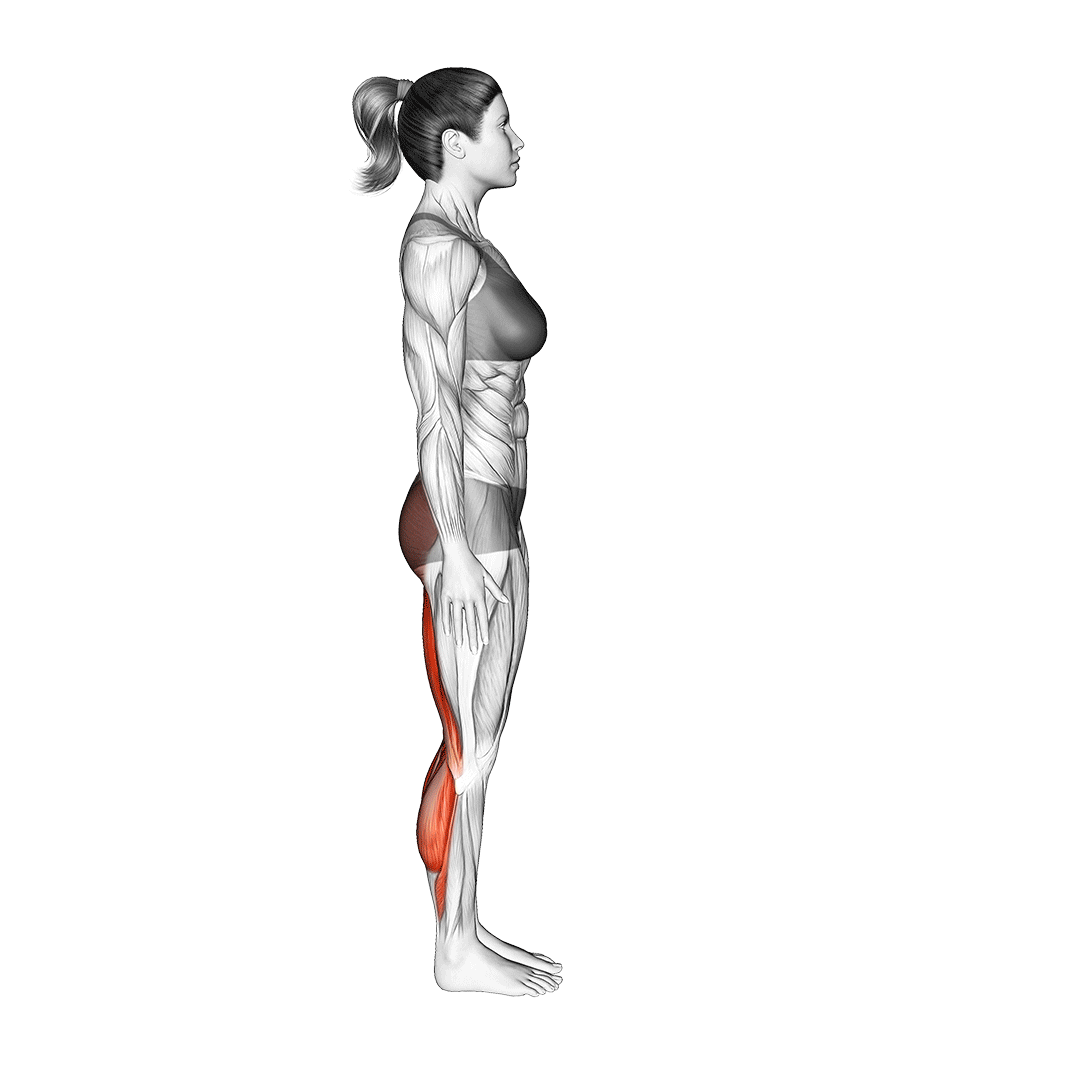
Benefits of the Standing Forward Bend Yoga Pose
The standing forward bend pose is extremely effective at maintaining and improving the flexibility of the lower back, glutes, hamstrings and calves - as it will place each of these areas in a state of near-terminal extension, if not absolute terminality.
Equipment Needed to Standing Forward Bend Yoga Pose
Like many other yoga poses, the standing forward bend will not require any equipment whatsoever.
How-to:
To perform this pose, the exerciser will stand with their feet hip-width apart and their breathing even.
Flexing their core, they will bend at the waist and hips, drawing their head towards the space between their legs as they bend in half. If needed, they may grip their legs for better stability.
Once the torso is low enough for a stretch to be felt in the glutes and hamstrings, they will hold the position for several counts before slowly returning to a standing pose.
In Conclusion
Remember that the biceps femoris is part of a larger muscle group and is rarely ever utilized on its own.
If you believe that the biceps femoris (by itself) has been damaged or weakened in some way, it may be best to seek out medical advice, as this could be indicative of a number of injuries and conditions.
And as always; if unsure of how to go about programming an exercise, performing a stretch or any other fitness activity, it is perfectly fine to seek out the advice of a professional coach.
References
1. Llurda-Almuzara L, Labata-Lezaun N, López-de-Celis C, Aiguadé-Aiguadé R, Romaní-Sánchez S, Rodríguez-Sanz J, Fernández-de-Las-Peñas C, Pérez-Bellmunt A. Biceps Femoris Activation during Hamstring Strength Exercises: A Systematic Review. Int J Environ Res Public Health. 2021 Aug 18;18(16):8733. doi: 10.3390/ijerph18168733. PMID: 34444481; PMCID: PMC8393607.
2. Trindade TB, Neto LO, Pita JCN, Tavares VDO, Dantas PMS, Schoenfeld BJ, Prestes J. Pre-stretching of the Hamstrings Before Squatting Acutely Increases Biceps Femoris Thickness Without Impairing Exercise Performance. Front Physiol. 2020 Jul 7;11:769. doi: 10.3389/fphys.2020.00769. PMID: 32733274; PMCID: PMC7358463.
